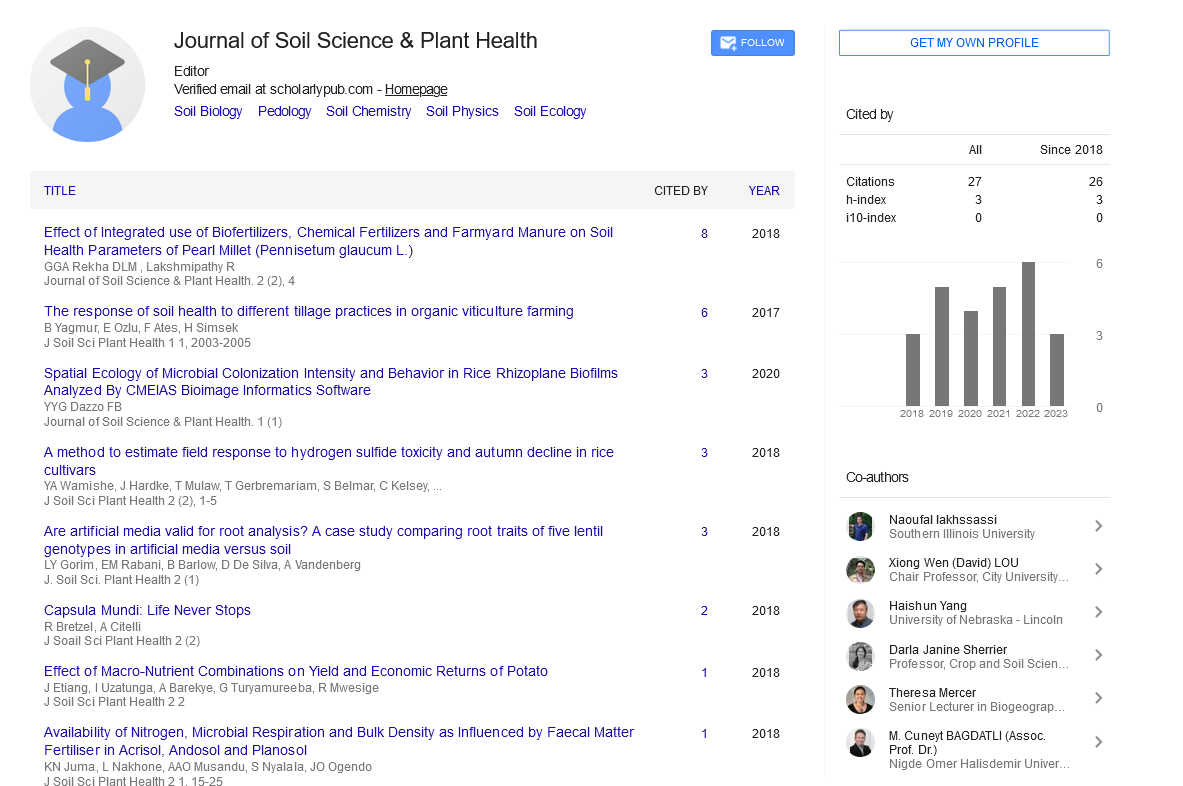Commentary, J Soil Sci Plant Health Vol: 5 Issue: 12
Plant Pathogens and Food Availability: A Source
Richard N Strange*
Department of Biology, University College London, London WC1E 6BT, United Kingdom
*Corresponding author: Dr. Richard N Strange, Department of Public Health, University of Pittsburgh, Pittsburgh, PA, USA, Email: Richard_Strange @yahoo.com
Received date: December 02, 2021; Accepted date: December 16, 2021; Published Date: December 23, 2021
Citation: Strange RN (2021) Plant Pathogens and Food Availability: A Source. J Soil Sci Plant Health 5:12.
Abstract
Based on currently available data, up to 30% of global staple food crops are lost annually due to plant pests, including diseases, insects, and weeds, but excluding abiotic factors such as drought, excessive water, or poor soils. When diseases severely affect staple crops in low income or under-resourced regions of the world, food availability is threatened, potentially resulting in malnutrition and population-based famine in severe cases. In addition, loss of income from cash crops sold by small commercial farms can have a cascading effect, exacerbating poverty among populations who depend upon farmers to purchase goods and services from the rural non-farm sector.
Keywords: Plant Pathogens, malnutrition, Food Crop
Description
Based on currently available data, up to 30% of global staple food crops are lost annually due to plant pests, including diseases, insects, and weeds, but excluding abiotic factors such as drought, excessive water, or poor soils. When diseases severely affect staple crops in low income or under-resourced regions of the world, food availability is threatened, potentially resulting in malnutrition and population-based famine in severe cases. In addition, loss of income from cash crops sold by small commercial farms can have a cascading effect, exacerbating poverty among populations who depend upon farmers to purchase goods and services from the rural non-farm sector.
Food Crop in the World
Bananas (Musa spp.), including dessert banana, plantain, and cooking banana, comprise the eighth most important food crop in the world and the fourth most important in low- and middle-income countries in terms of gross production value. Bananas are a staple crop and important source of protein, starch, vitamins, and minerals in East and Central Africa, ranging from 20% of household food consumption each day in Uganda to 80% in Rwanda. Bananas historically had been among the least expensive of the staple crops to produce. They have multiple uses in crop production systems, such as cycling carbon and soil nutrients, preventing soil erosion, and providing shade for understory crops. Additionally, bananas are a source of food for livestock and used for the production of goods such as baskets, carpets, and shoes.
A vast number of plant pathogens from viroids of a few hundred nucleotides to higher plants cause diseases in our crops. Their effects range from mild symptoms to catastrophes in which large areas planted to food crops are destroyed. Catastrophic plant disease exacerbates the current deficit of food supply in which at least 800 million people are inadequately fed. Plant pathogens are difficult to control because their populations are variable in time, space, and genotype. Most insidiously, they evolve, often overcoming the resistance that may have been the hard-won achievement of the plant breeder. In order to combat the losses they cause, it is necessary to define the problem and seek remedies. At the biological level, the requirements are for the speedy and accurate identification of the causal organism, accurate estimates of the severity of disease and its effect on yield, and identification of its virulence mechanisms. Disease may then be minimized by the reduction of the pathogen's inoculum, inhibition of its virulence mechanisms, and promotion of genetic diversity in the crop. Conventional plant breeding for resistance has an important role to play that can now be facilitated by marker-assisted selection. There is also a role for transgenic modification with genes that confer resistance. At the political level, there is a need to acknowledge that plant diseases threaten our food supplies and to devote adequate resources to their control Plant pathogens are forming a huge problem on the economic and life stability. The plant pathogens are increasing in the wide world. The plant pathogens comprise viruses, bacteria, fungi, nematode, and parasitic plant. The plant pathogens cause the diseases for leaf, stem, root, vascular system and fruit. The plant pathogen attacks the plant by using some mechanisms that are responsible for increasing the disease and appearance the symptoms The success in the interaction between plant and plant pathogens is causing a full infection that called a compatible interaction.
 Spanish
Spanish  Chinese
Chinese  Russian
Russian  German
German  French
French  Japanese
Japanese  Portuguese
Portuguese  Hindi
Hindi 